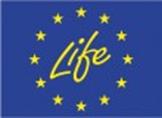 The magnitude of climate change is considered to be dependent on the atmospheric load of the two most important greenhouse gases, carbon dioxide (CO2) and methane (CH4). The terrestrial biosphere plays an important role in the global carbon balance, and boreal forests and peatlands are an important part of the global carbon cycle. The future development of carbon and water balances and their relationship to climate change in boreal zones are currently poorly known. Such knowledge gaps are particularly acute at regional level, and obtaining accurate figures of country-based carbon balances and their future development is a challenge. Climate change indicators are simple ways of presenting difficult information to the public. In order to map the climate change indicators related to boreal ecosystems, versatile observational and modelling tools must be used.
The magnitude of climate change is considered to be dependent on the atmospheric load of the two most important greenhouse gases, carbon dioxide (CO2) and methane (CH4). The terrestrial biosphere plays an important role in the global carbon balance, and boreal forests and peatlands are an important part of the global carbon cycle. The future development of carbon and water balances and their relationship to climate change in boreal zones are currently poorly known. Such knowledge gaps are particularly acute at regional level, and obtaining accurate figures of country-based carbon balances and their future development is a challenge. Climate change indicators are simple ways of presenting difficult information to the public. In order to map the climate change indicators related to boreal ecosystems, versatile observational and modelling tools must be used.
Objectives
The LIFE MONIMET project aims to fill knowledge gaps and better understand the future development of carbon and water balances and their relationship to climate change in boreal zones. It will also fill knowledge gaps concerning indications of a region’s vulnerability by implementing an innovative approach to in-situ monitoring and mapping of climate change indicators that have an influence on the mitigation potential and vulnerability estimates of boreal forests and peatlands. The approach is based on a combination of different information sources describing phenology, CO2 and CH4 exchange, land cover, snow evolution and albedo. The information sources include in-situ observations and Earth Observation (EO) (satellite) data, as well as ancillary data supporting vulnerability assessments. Dedicated high resolution regional models will be applied to describe climate and land surface fluxes of carbon and water by different ecosystems.
Actions carried out to achieve these objectives shall involve:
- Collecting information, data and expertise that is currently spread over several institutes, in order to build a comprehensive platform for analysing climate change effects on seasonal dynamics of various phenomena;
- Establishing links and adding value to existing monitoring mechanisms such as ICOS and EO systems (GMES) and making use of data acquired in previous LIFE-funded - and other - projects related to ecosystem monitoring;
- Creating a new webcam monitoring system in order to facilitate EO systems by providing time-series of field observations for calibration and validation, as well as to improve the assessment of forest ecosystem services;
- Synthesising modelling and observation approaches to identify climate indicators; and
- Linking the climate change indicators and their effects in order to create vulnerability maps of boreal zones in connection to climate change scenarios.
Results
- A web camera network observing seasonal changes in boreal ecosystems of Finland was established. Cameras were mounted at 14 sites. Each site has 1-3 cameras. The web camera network and image database are documented in Peltoniemi et al. 2018. Image time series from individual cameras for the period 2014-2017 are available for download in a permanent data repository . Information on individual sites and camera settings are given here.
- The carbon cycle of natural terrestrial ecosystems was simulated with two models, a land ecosystem model (JSBACH) and semi-empirical stand flux model (PREBAS). The models were run with climate data from 15 scenarios of the CMIP5 (Coupled Model Intercomparison Project Phase 5) project.
- Key climate change indicators of terrestrial ecosystems, such as Gross Primary Production, Net Ecosystem Exchange, ecosystem respiration, length of the vegetation active period and forest growth, were retrieved from the model results and maps of the impacts of climate change were published in Climateguide.fi.
- Vulnerability to nitrate in drinking water was assessed as simulated (INCA-model) change in nitrate loading and population change for a catchment in Southern Finland. No increase in vulnerability was found for future climate scenarios
- Satellite-based time series of start of the vegetation active period and the time of snow melt were produced from MODIS (Moderate Resolution Imaging Spectroradiometer) observations for the period 2001-2016. Yearly maps of the start of the vegetation period in Finland can be viewed online and downloaded from SYKE’s Open Data service.
Publications
Updated list of publications available from the projects web page.
Contact person in SYKE
Kristin Böttcher, Finnish Environment Institute SYKE, firstname.lastname@ymparisto.fi